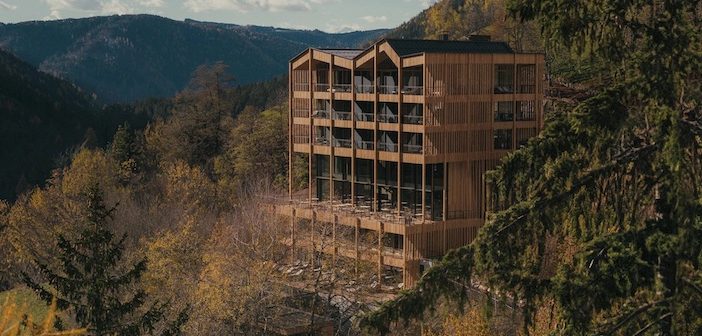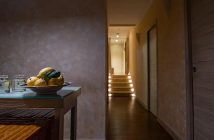The Alps are full of spas. After all, long before even the concept of a spa as we know it today was formed, invalids would make their way to the mountains where the clean air and healthy food would play a major part in nursing them back to health. Today, there are many truly outstanding spas across the mountains in Austria, Italy and Switzerland focusing on that long tradition. For a quite different tradition, though, I headed to Bolzano in the Italian Dolomites and Engel Ayurpura for an Ayurvedic retreat.
Housed in a beautiful new wooden building next to the original Engel Hotel, the Ayurpura has just 15 rooms, beautiful spa facilities, glorious relaxation rooms overlooking the mountains and, in common with most alpine spas, a medicalised approach. In this case, though, the medicine is traditional Indian and so it all began with my consultation with Dr Mishra. He started with my pulse – nothing odd there, you might think. But, in Ayurveda, there are three pulses and these tell him a lot. So having played on my wrist like a violin for a few minutes, he was ready. My Vata was high, he told me, my Kapha was also high while my Pitta was low. His aim was to bring these as much as possible into harmony and, to do this, I would embark on a Panchakarma programme (literally, the science of life).
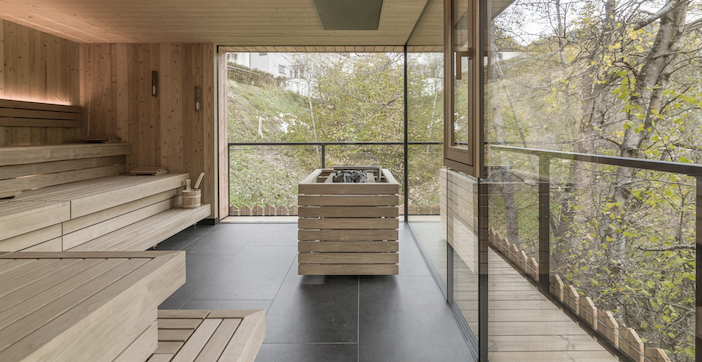
So, let me explain. Ayurveda works on the basis that we’re not all the same. We begin with different metabolisms, characteristics, proclivities and lifestyles. There is no one size fits all in Ayurveda and it divides these tendencies into three “doshas” – Vata, Pitta and Kapha. People are rarely just one, more of a mixture and you can have imbalances from any of them – and Ayurveda strives for balance above all things. So here’s a quick sketch of the doshas. Vata is skinny with dry skin, creative, active, quick-witted and feels the cold. Pitta is average height and weight, analytical, sporty, competitive and can be workaholic. Kapha is the biggest body type with pale skin, patient, reliable, sentimental and likes lots of sleep. So to do Panchakarma you have to work out which dosha mix you are, what are your imbalances and how to put them right.
Panchakarma is the Ayurvedic version of a total detox. So, I will only have hot food and drinks (in Ayurveda the salad, elsewhere regarded as the healthiest of foods, is generally spurned). I must drink a minimum of 2 litres of hot liquids a day (mostly water and herbal teas, though there is also quite a lot of vegetable broth). I will have a series of massages and other treatments that he will work out – you don’t pick the massages you fancy here, they are prescribed treatments.
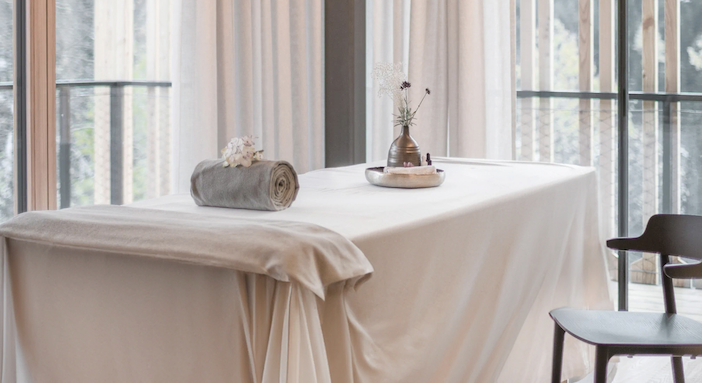
And the first is Viloma Abhyangam. Now the great joy – aside from the results – of Panchakarma is its massages. They were first designed for the exclusive use of Maharajahs and the like as their properties were both so powerful and so delightful they weren’t to be wasted on the hoi polloi. In Ayurvedic massages, sesame oil (either in its pure form or with added herbs and spices) is applied very hot and there’s plenty of it. The strokes are long, slow, strong and rhythmic. The bed is heated and any bit of me not being massaged is covered up often with a hot water bottle on top. Resistance is futile. First my muscles melt in the heat, then the joints open and relax. I begin to feel that I’m not just swimming in oil, I must be exuding it too. I’ve probably got enough on me to swim the Channel.
On my first afternoon, this is the first of three treatments that morph one into the next. The second is Udara Abhyangam which is quite a strong abdominal massage and the third is Nabhi Basti which is a treatment so hilarious you would laugh if you weren’t balancing a ring on your belly. Simply put, an arena-shaped structure made of chickpea paste (honestly, I’m not making this up) is placed over the abdomen, the edges blended on to the already oily skin to form a seal. Then more hot sesame oil is poured in to be gradually absorbed through the skin and the belly button because of its nourishing and cleansing properties.
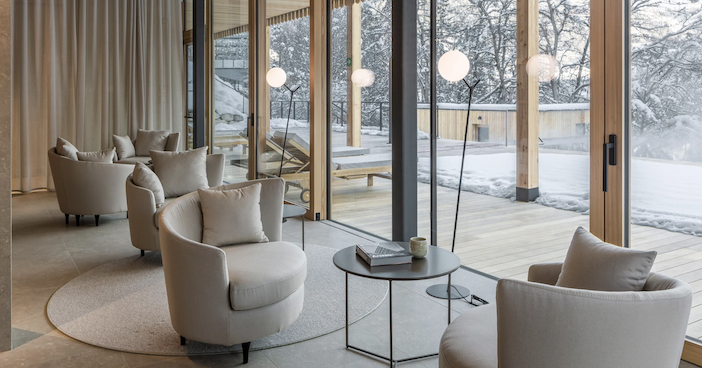
About a quarter of an hour later, I’m sitting in the meditation room with Dr Mishra who explains the basics of meditation and takes it back several steps – concentration, relaxation, breathing – before we have a short session based around seeing colour. For me, this is a much better approach than just trying to focus on my breath when my mind generally does its best to imitate a cartload of monkeys. There is a meditation session most evenings and an early morning yoga session. For me, though, I have to miss the next day’s yoga as I’m up for one of Panchakarma’s least pleasant experiences: ghee.
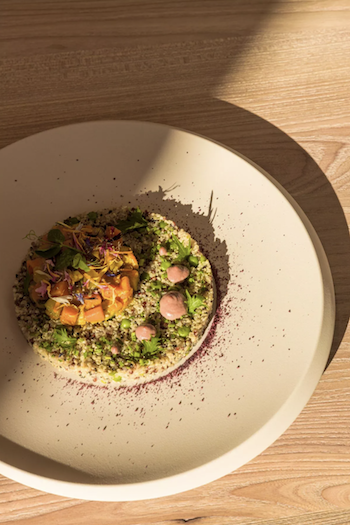 To release ama (waste and toxins) into the digestive system and flush it out, half a cup of ghee (hot clarified butter) is, effectively, breakfast. This is followed by a desperate suck on a lemon to take away the taste and a small cup of vegetable broth. I am now on the Panchakarma programme and normal food is a thing of the past. In my case, it involves a lot of broth-style soups and cooked vegetables though some, such as potatoes and pumpkin, are off the menu. Given this minimal list of ingredients, the food is surprisingly good and everything here is gluten and dairy free. There were some stand-out dishes: spinach timbale with brown mustard, turmeric and tomato chutney was deliciously spicy; beetroot “ravioli” stuffed with tofu and olives had a tapenade-style kick; and paneer pakoras with fresh coconut sauce were memorable as my first taste of obvious protein all week.
To release ama (waste and toxins) into the digestive system and flush it out, half a cup of ghee (hot clarified butter) is, effectively, breakfast. This is followed by a desperate suck on a lemon to take away the taste and a small cup of vegetable broth. I am now on the Panchakarma programme and normal food is a thing of the past. In my case, it involves a lot of broth-style soups and cooked vegetables though some, such as potatoes and pumpkin, are off the menu. Given this minimal list of ingredients, the food is surprisingly good and everything here is gluten and dairy free. There were some stand-out dishes: spinach timbale with brown mustard, turmeric and tomato chutney was deliciously spicy; beetroot “ravioli” stuffed with tofu and olives had a tapenade-style kick; and paneer pakoras with fresh coconut sauce were memorable as my first taste of obvious protein all week.
Days are structured. There is yoga and meditation top and tailing the day and the spa and pools to relax in. Speaking of relaxation, there is a lovely rooftop space where you can gaze at the mountains for hours with, if you like, infra-red loungers for extra back de-stressing. You can swim and walk (and the mountains really are beautiful) but strenuous exercise is not permitted. Every day you have two hours of glorious treatments with some of the best therapists I’ve come across. Shunanda (“it means peace”), Raffaella (“like the angel”) and Hilaria (“like hilarious”) were all professional and delightful and it’s a place where you develop a real rapport with the people who work in the spa.
Day 4 was time for my halfway consultation with Dr Mishra and, to my delight, he told me that my worrying level of Kapha had already dropped while both Vata and Pitta were just where they should be. Nodding wisely, he praised the ghee and spurred me on to greater things. He had already given me various supplements to promote the detox and now decided on the best treatments for the rest of my stay. After feeling as oily as a mackerel for several days, now there was a dry massage using a herbal powder – I thought it might be an exfoliant but there’s nothing that superficial in Ayurveda. Instead, it worked on drawing water out of the body and was partnered with the Ayurvedic version of lymphatic drainage – my entire body was made to ripple and tremble and my armpits (a major home of the lymph node) were treated to the most intensive massaging they’d ever experienced.
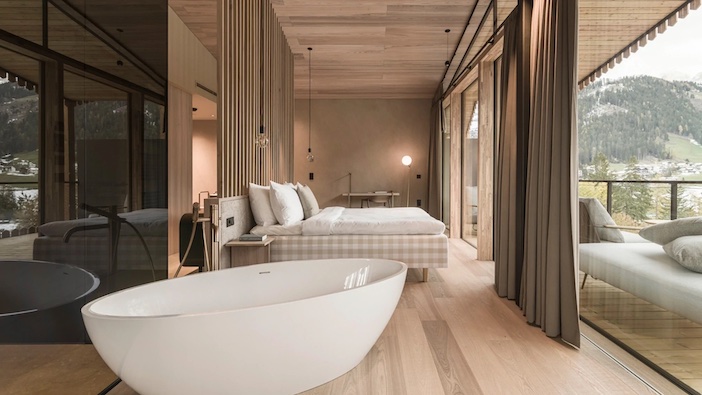
True Panchakarma really requires a minimum of ten days (two or three weeks are better) but even after a week I felt cleansed and calm not just physically but mentally, too. On the evening before I left I had my final consultation with Dr Mishra who told me my Kapha had now come down to acceptable levels, too.
Now, all I had to do was continue the process of healthy living back in the real world…
The Engel Ayurpura Panchakarma 7-day programme starts from €1,995 per person. Double rooms from €215 per person per night. For more information, and for reservations, please visit www.ayurpura.hotel-engel.com. ayurpura@hotel-engel.com
SkyAlps operate twice-weekly flights from London Stansted – Bolzano, starting from €184 each way www.skyalps.com.

